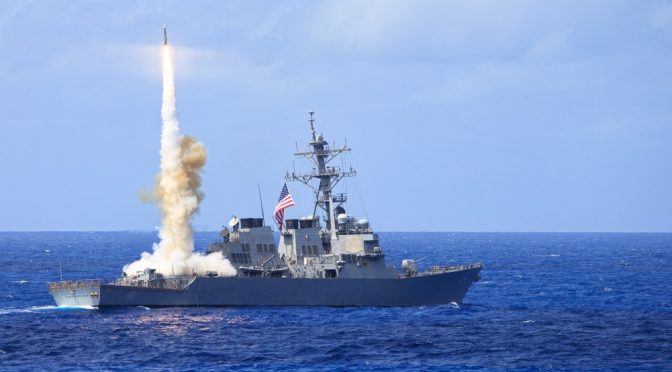Week Dates: Aug. 29-Sep. 2, 2016
Articles Due: Aug. 26, 2016
Article Length: 800-1800 Words (with flexibility)
Submit to: Nextwar@cimsec.org
By William Burke
We want to hear your ideas! This call for articles solicits input on the topic of Distributed Lethality to help shape the future of Surface Force initiatives.
Distributed Lethality is the condition gained by increasing the offensive power and defensive hardening of individual components of the surface force and then employing them in dispersed, offensive formations across a wide expanse of geography. Distributed Lethality leverages tactics, tools, talent, and training to enhance surface combat capability and promote the Navy’s principal role of controlling the sea in order to project national power through the core operational lines of effort of Deceive, Target and Destroy.
The most recent CIMSEC call for articles on Distributed Lethality yielded 12 submissions that formed a robust topic week in February, 2016. Moving forward, the Distributed Lethality Task Force (DLTF) continues its efforts to place a renewed emphasis on sea control. To support this journey, CIMSEC will hold a Distributed Lethality topic week during the week of 29 August through 2 September. Just as before, this series is intended to elicit innovative ideas to enhance the depth of understanding of the role of Distributed Lethality as both an operating concept and organizing principle in support of the Navy’s core missions.
The theme for this upcoming topic week is applying the Distributed Lethality concept to operational roles. Therefore, questions germane to the direction Distributed Lethality is headed and subjects that merit more thoughtful written discussion include: How are lines of effort in the Surface Navy aligned with fleet-wide initiatives and Combatant Commander needs? How can we effectively and innovatively deploy Surface Action Groups (SAG)? What platforms can compose an Adaptive Force Package and what missions could be performed?How can individual ships employ Distributed Lethality tactics while operating independently? How can assets other than surface ships be integrated into the Distributed Lethality construct? How could an “up-gunned” Expeditionary Strike Group be equipped and employed for distributed operations? How can we provide our ships accurate and timely targeting data? What weapon modernizations, combat systems initiatives, and future technology could improve Distributed Lethality? How can we operate distributed and agile logistics during conflict? How can we achieve assured command and control? What electromagnetic maneuver warfare enhancements can surface ships implement? How does cyber warfare fit into the Distributed Lethality construct?
Submissions can be written on the above issues or may expand on other lines of inquiry relevant to Distributed Lethality. Submissions should be between 800 and 1800 words in length (with flexibility) and submitted no later than August 26 to the CIMSEC editorial team at Nextwar@cimsec.org.
Editor’s Note: This topic week has since concluded and writings submitted in response to this call for articles may be viewed here.
William Burke is a Surface Warfare Officer in the United States Navy currently assigned to Commander, Naval Surface Forces Distributed Lethality Task Force.
Featured Image: The guided missile destroyer USS Curtis Wilbur (DDG 54) fires a RIM-66 Standard missile March 23, 2014, during a missile firing exercise as part of Multi-Sail 2014 in the Pacific Ocean near Guam. (FC2 Kristopher G. Horton, U.S. Navy)

